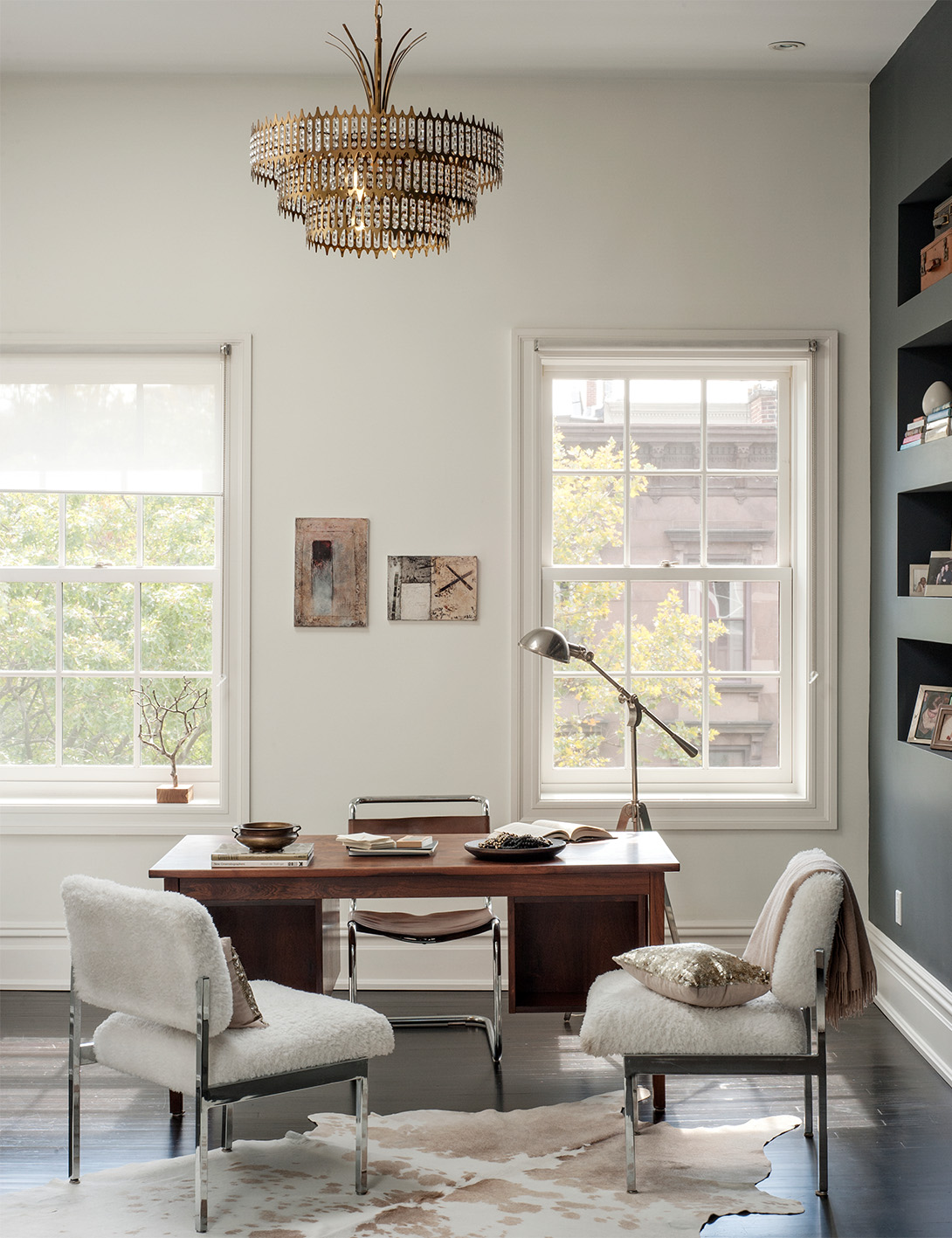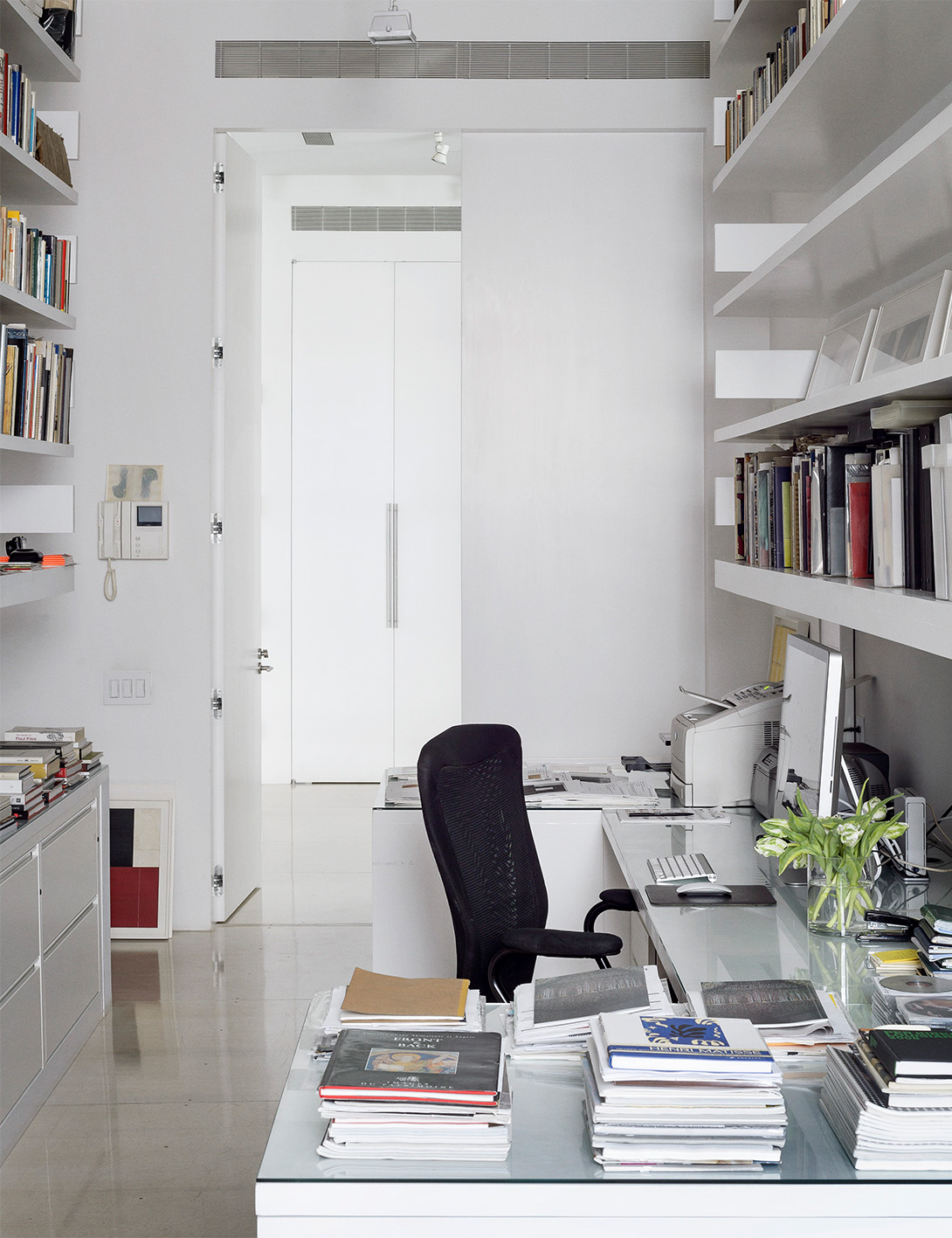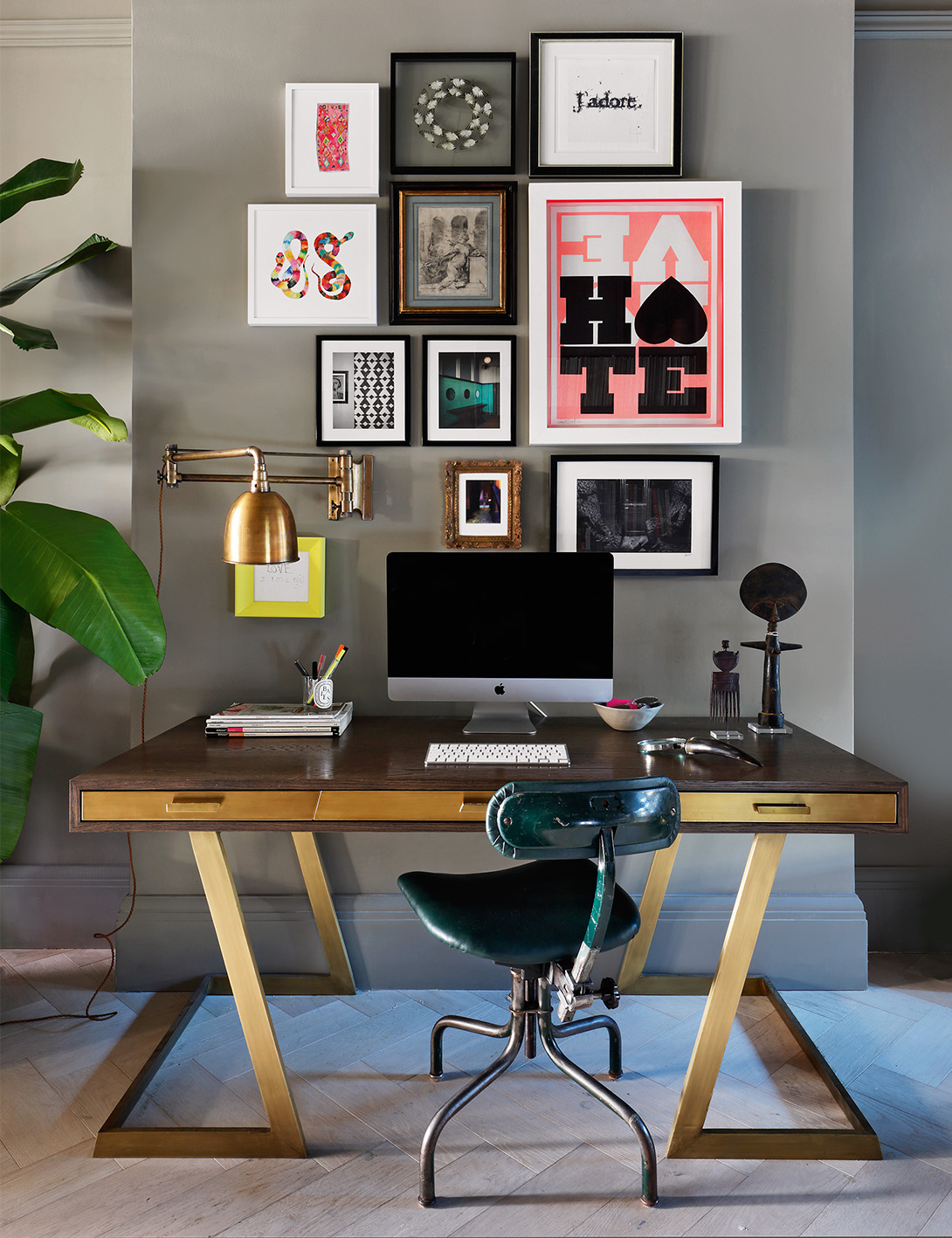How to make WiFi faster – 10 tips for a better signal
Knowing how to make WiFi faster is the secret to a happy home and work life, creating internet coverage that is as sharp as your interior style

How to make WiFi faster is one of those questions that is constantly on our minds. Along with ‘What’s the meaning of life?’, ‘What color should I paint the hall?’ and ‘Who will win Strictly Come Dancing?’, ‘How to make Wi-Fi faster?’ is up there as one of life’s most pressing problems. With more of us using Wi-Fi-based smart-home gadgets to carry out everyday tasks such as turning on lights, answering the doorbell, accessing Alexa, and so on, having reliable and speedy Wi-Fi has never felt so important.
Add into the mix working from home, teenagers who love gaming, kids on their tablets, and checking in on pets with smart indoor cameras and good Wi-Fi is simply a must. An easy trick, of course, is to get one of the best wifi extenders.
Making your Wi-Fi faster and knowing how to get a better signal will help you improve your broadband speed. It's important to check you have the best Wi-Fi router and signal to maintain a ‘healthy’ smart and automated home.
So if you’re unsure you’ve got the best broadband deal, not getting the best Wi-Fi range in and around your home, or just want to stop Netflix buffering every time you get to a tense part in Squid Games, read on for our expert tips.
How to make Wi-Fi faster – 10 tips for a better signal
1. Tick off the essentials
In true IT fashion, this is the part when we tell you to turn your router on and off again. Still not up to speed? At least we got that out of the way. Next up – do as we would do and send a quick message to the street WhatsApp group asking if anyone is having similar internet issues. While you’re there have an essential moan about the state of the WiFi speed in your area as it would be rude not to. Finally, grab a cup of tea so you’re feeling suitably refreshed as we venture into the technical bit…
2. Check you have the best broadband deal

Online gaming, video calls, having a go at the best Alexa skills, and streaming movies can all have an impact on broadband speed, so it’s good to check you have the best deal for your requirements. ‘Whether it’s Zoom, Teams, or FaceTime, we’ve all become far more accustomed to video calls over the past year,’ says BT’s home tech expert Tayyab Farid.
‘Each video call needs a minimum of 2Mbps download speed, and as video calls ideally need some privacy, it’s crucial to have a need a strong connection in different rooms of the house. Likewise, insights from BT have revealed that to play online games at an ‘optimum’ level, players will require speeds of between 15-25Mbps – which has a significant impact on the broadband connection in the rest of the home. That’s why it’s important to check you have the best broadband requirement for your needs.’
The Livingetc newsletters are your inside source for what’s shaping interiors now - and what’s next. Discover trend forecasts, smart style ideas, and curated shopping inspiration that brings design to life. Subscribe today and stay ahead of the curve.
Uswitch offers a price comparison checker on broadband, which can be a good place to start. All you need to do is enter your postcode and it will show you what's available in your area and help you find a good deal.
3. Test your ethernet speed
Next up, it’s a good idea to check your existing WiFi speed to ensure everything is working correctly as it’s important to know what could be causing a slow down in Internet speed. There is a broadband speed checker on Compare the Market that lets you know how long it will take you to download a film or game in your area. It provides information on both your download and upload speeds and lets you compare your connection with various providers in your area.
David Ballard, director at WiFi specialist consultancy Performance Networks, suggests testing your ethernet speed. 'It's important to test what speeds you get when connected by ethernet straight into your home hub. Where are you testing from? Most home setups involve a line coming into your house and an ISP (Internet Service Provider) router connected to it i.e BT home hub or Virgin hub. These hubs have WiFi enabled on them and usually a 4-port switch that you can connect an ethernet cable into. You could also try one of the best WiFi booster apps to help you.
'There are many sites that allow for speed testing such as Speed Test and Broadband Speed Checker. Do a few tests at different times of the day and record the results. You can raise a ticket with your ISP if they’re not what you expected.'
4. Test your WiFi speed
David Ballard also suggests testing speeds again when you're connected to WiFi. 'As well as checking ethernet, use one of the speed testers to check when you're connected to WiFi,' he says. 'First, disconnect the ethernet cable and test from the same room over Wi-Fi. Make sure it’s just you on the Wi-Fi - so no kids on video games or streaming films.
'Use two or more devices and make sure you use WiFi and not 3/4G to ensure it’s not a problem with a device. Try this in various rooms. The speeds should decrease as you go further away from the Hub/Router. But if the signal or speeds are too slow in one room then you may need a second WiFi access point (AP).'
5. Position your router correctly
Your home’s age can affect the WiFi signal – if you live in a new build with paper-thin walls you’re likely to have far better coverage than if you’re in a period stone cottage with thick walls, for example. Unavoidable hurdles aside, however, you can start by ensuring you have the optimum position for your router.
The best place to position your router is in the center of your home. But if you prefer to keep your carefully curated coffee table as the main focal point of your living room - as opposed to an unsightly router - we can totally relate. What you can do, however, is check that there aren’t any obstructions around your router blocking the signal – such as a TV screen or soundbar. It’s important to give your router ‘space to breathe' so to speak.
‘The best thing to get a WiFi signal from A to B is line of sight,’ says Stephen Warburton from broadband provider Zen. ‘Any walls, cupboards, even electronic devices that are in the path of your signal will degrade it - and that means weaker WiFi to your devices.
‘WiFi uses radio waves that generally spread out and towards the ground, not up, so it’s worth considering mounting your router on the wall with wires out of reach from pets and children. Placing it on the second floor - if you have one - could also help.’

6. Place your router away from other gadgets
As much as we love the latest smart home gadgets here at Livingetc, they can sometimes put a strain on our WiFi connection. Electronic devices such as baby monitors, the best smart speakers, microphones, and Bluetooth equipment can all interfere with WiFi signals, so where possible it’s best you keep them as far away from each other as possible.
‘It is best to avoid placing the router in the kitchen at all because the electromagnetic waves from a microwave can interfere with the WiFi signal,’ says Stephen Warburton. ‘Stereos, speakers, TVs, and halogen lamps can all also affect WiFi if they are too close to your router.’
7. Clean your computer
It’s not the outside, but what's on the inside that counts. When we talk about cleaning your computer, we’re not recommending screen cleaner, although it’s probably a good idea to set aside some time to refresh your computer every now and then. But what with shopping online, downloading images and software, sending emails, and jumping on various calls, our computers take on quite a bit in one day, so taking a moment to clean your computer’s hard drive may just speed up your computer and overcome any WiFi issues.
‘Some applications on your PC could affect your broadband speed, without you even realising it,’ say the broadband experts at Compare The Market. ‘A few simple quick fixes include making sure your anti-virus software is up to date, using the latest version of your web browsers - such as Chrome, Firefox, or Microsoft Edge - and clearing your cache and browser history.’
8. Consider using an Ethernet cable
As much as we love streamlined spaces with wiring and cables neatly integrated into walls and out of sight, sometimes a bunch of cables is just what is needed to get the best Internet connection. These devices will need to be placed near your router, however, which won’t always be the most convenient option.
'Opt for a wired connection in devices such as a desktop PC, TV, set-top boxes, and games consoles if you can. This can work if they are close enough to your router to directly connect and don’t need to be moved,’ says Stephen Warburton from Zen.
‘Connecting these to your network using an Ethernet cable will guarantee the best connection and, crucially, you’ll be freeing up the wireless airwaves so there’s less competition for other wirelessly connecting devices.’

9. Turn off the WiFi gadgets you aren’t using
Have you ever counted how many devices are running off your WiFi? Be it smart lightbulbs, Alexa, wireless doorbell, indoor security cameras, or even a smart coffee machine, they can all add up. Recent research from BT showed that the average home now has 28 devices connected to WiFi, in fact!
Take a moment to review what you really need and what can be turned off when not needed. ‘If you have multiple devices such as tablets and smartphones running in the background, it can slow down your broadband, so try switching WiFi off on these when you’re not using them,’ say the broadband experts at Compare The Market. ‘You should also avoid carrying out data-heavy tasks like HD streaming, gaming, or video calls at the same time as others in your household if possible.’
Zen also recommends disabling automatic updates on your devices such as your phone or your PC that could be guzzling your WiFi. Change the settings on your devices so you manually download updates when it works for you.
10. Boost your WiFi with extra gadgets
There are a number of extra devices you can use to give your WiFi a boost. If there are certain rooms that aren’t getting the best WiFi or perhaps you want to increase your WiFi coverage to an outbuilding in your garden, a well-positioned router can help. ‘WiFi boosters – also called Wi-Fi extenders or repeaters – will help to increase the range of Wi-Fi in your home,’ explains Max Beckett from USwitch.
‘You can expect to pay anywhere between £20 and £50 for a WiFi booster and luckily installing a WiFi extender is a lot simpler than fitting a broadband connection, so you shouldn’t need an expert to install it for you. When you come to fitting one, position it as far away as possible from your router to benefit from the furthest range.’
You can find a range of companies online selling WiFi boosters including D-Link and TP-Link UK.
One of the UK's most respected tech and smart homes writers, Emily Peck also covers everything from interiors style to decorating trends. She is a contributor to Wired UK, and has also had a column in House Beautiful. She has written for publications such as Grand Designs, Stylist, Shortlist, Woman&Home, BBC, Ideal Home and House & Garden. She was once the Features Editor of Ideal Home.